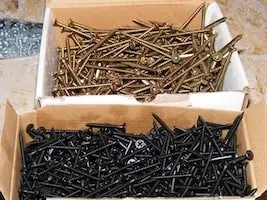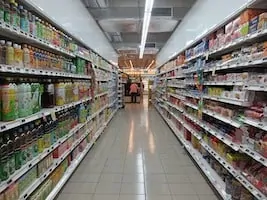For a considerable portion of my career I have worked in the Manufacturing and Logistics/Distribution Industries. In these industries a segment of the Procurement organization is called Commodity Management, not Category Management.
However when I entered the Retail industry the group largely responsible for Procurement, amongst other things, was called Category Management.
At its core each group was procuring goods. But while there were shared responsibilities there were also key differences.
So what is the difference between Commodity Management and Category Management?
Commodity Management
In my Manufacturing experience the Procurement function was essentially split between Commodity Management (or Strategic Sourcing) and Tactical Buying.
The Tactical Buying teams performed all of the day to day Procurement activities. They would place, change, and manage purchase orders. They would call suppliers to deal with specific delivery and quality matters.
The Commodity Management team was more strategic.

First of all they were organized by “Commodity”. That is each Commodity Manager would be responsible for a certain commodity (eg. cables, plastics, semiconductors, etc). And the Commodity Management team clearly reported into the Supply Chain organization.
The Commodity Manager would be responsible for the entire strategy for buying their respective Commodity. They would be responsible for Supplier selection, negotiations, contracts and terms and conditions, sourcing decisions, competitiveness, and performance management.
The Buying teams were basically the execution engine working with the suppliers and terms that had been strategically defined by the Commodity Management (or Strategic Sourcing) team.
The Commodity Managers were typically career Supply Chain and Procurement people. There were certainly exceptions as they were considered to be running small businesses with respect to the considerable amount of spend that they controlled.
Category Management
When I entered the Retail industry I brought along my concept of Procurement and Commodity Management.
I quickly learned that Retail defined and managed Procurement in a much different fashion. And it was organized much differently.

In Retail they use the term “Category Management”. Depending on the type of Retail company you have the categories will differ but the concept is the same. In a Grocery business the categories could be Produce, Dairy, or Canned Goods for instance. In a General store environment categories could include Women’s clothing, Automotive goods, Hardware, and more.
The organizational alignment of the Category Management team was much different. Category Managers reported into the Merchant organization, not Supply Chain.
Responsibilities for Category Managers also extended far beyond that of the Commodity Management group I was used to.
Category Managers were also responsible for Sales and Marketing of the Categories that they managed. They also had input into Merchandising and Promotions.
They managed the entire processes of Strategic Sourcing AND Tactical Buying.
Unlike the Commodity Managers who were largely Procurement experts, the Category Managers were largely Sales, Marketing and Merchant experts.
Similarities and Differences
Without exception both Commodity Managers and Category Managers were performing Strategic Sourcing activities. They both searched for, selected and qualified suppliers. They performed all negotiations and managed all contracts. And they were both responsible for how their suppliers performed in all respects.
Beyond that Strategic Sourcing responsibility there were key differences. The Category Managers were clearly responsible for Product selection and Sales and Marketing, which Commodity Managers were not.
Category Managers would be required to report on Sales performance at a detailed level which would inform future supplier and product selection decisions. Commodity Managers would be buying the products and materials selected by Customers or Product Development teams.
Category Management was unequivocally aligned with the Chief Merchant. The Logistics and Distribution organizations were aligned with Supply Chain. Commodity Management on the other hand was aligned with Supply Chain and the Chief Procurement Officer.
Consistent with these differences, in both organization and responsibility, the skills and experience of these groups varied as well.
Category Managers were more likely to be Sales and Marketing experts. The task of visiting suppliers and negotiating was, while important, secondary and not the prime expertise of Commodity Managers.
The Commodity Managers on the other hand were primarily Procurement experts. They were negotiating experts with business management skills and aptitudes.
Conclusion
Depending on your industry you may be familiar with the term Category Management or Commodity Management. Or you may consider these phrases to be synonymous.
In my experience there are both similarities and differences between these two terms with respect to responsibilities, organization, expertise, aptitude, and capabilities.
In either case both of these roles are phenomenal positions with respect to learning and managing a business. Their contributions are incredible and will make or break the success of any company in any industry.


I’ve been under the assumption these were the same thing! No wonder I never heard back from the commodity management jobs I applied for — all my experience is in retail and category management. This post definitely gave me an embarrassing lightbulb moment!
The main thing is that they involve the definition of sourcing strategies for distinct group(s) or categories or commodities and require necessarily a helicopter, end-to-end, view of all the activities in the whole value chain and supply chain from source, through the organisation, to the customer or final consumer, depending on the size or reach of the organisation.
It is the resulting strategy for that commodity or category that defines who in the organisation should be responsible for what activity in the whole chain or how the organisation should be reorganised for better delivery of the strategy.